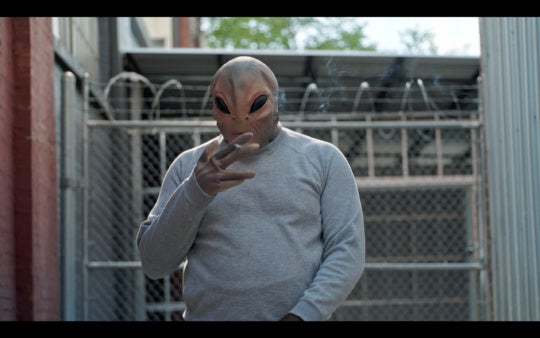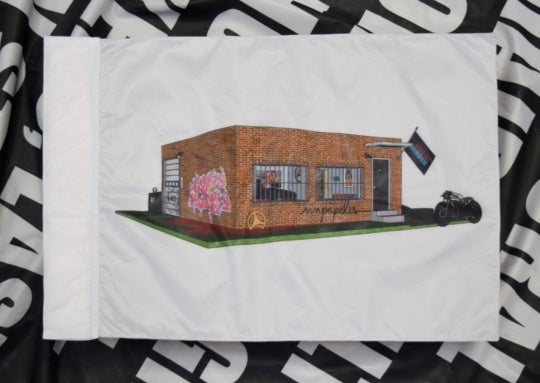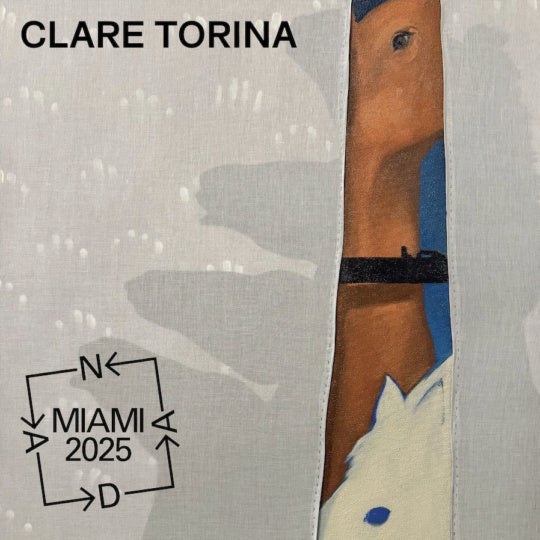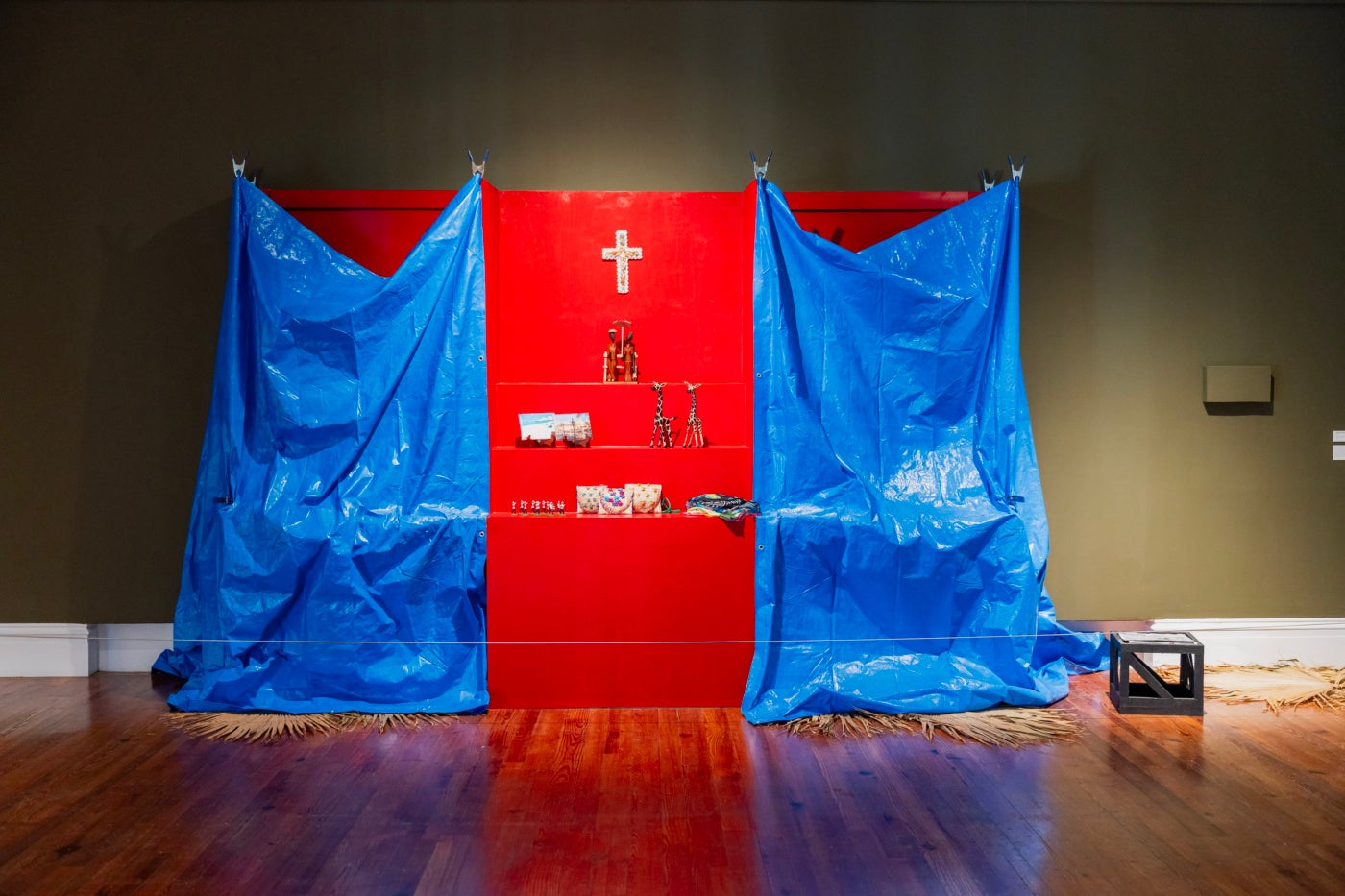
A Bahamian straw market stall, sparse by way of wares and shrouded in blue tarpaulin, stands tall and imposing, painted in red (a warning, an alert), and reminiscent of a shrine as an omen of tourism in the nation. The blue tarp in Everybody’s Business (2024) references the cycles of construction and destruction common in the region, reflecting the environmental and economic challenges faced by small island states in the Caribbean hurricane belt. Bahamian multidisciplinary artist Jodi Minnis Rolle, concerned with intimacy and care at the heart of her practice, turns to the materiality of the landscape to investigate, agitate, and critique tourism and its colonial legacies in the Caribbean contemporary.
Minnis Rolle is no stranger to tourism. In addition to her art practice, she works as a curator and gallery manager at TERN Gallery in Nassau, located on the grounds of a boutique hotel. The Bahamas, in particular its capital, Nassau, is one of the proverbial birthplaces of tourism as an industry in the Caribbean. Tourism isn’t just something Bahamians engage in for a living. Much of the semiotics and identifiers associated with the culture come deeply intertwined with the history of tourism in The Bahamas itself. The conception of the nation as a picturesque destination is so embedded in the local consciousness that the line between what is tourism product and what is culture becomes troublingly blurry. She remains vocal about the myriad ways that tourism has had a profound influence on Bahamian identity and self-understanding since the industry’s inception.
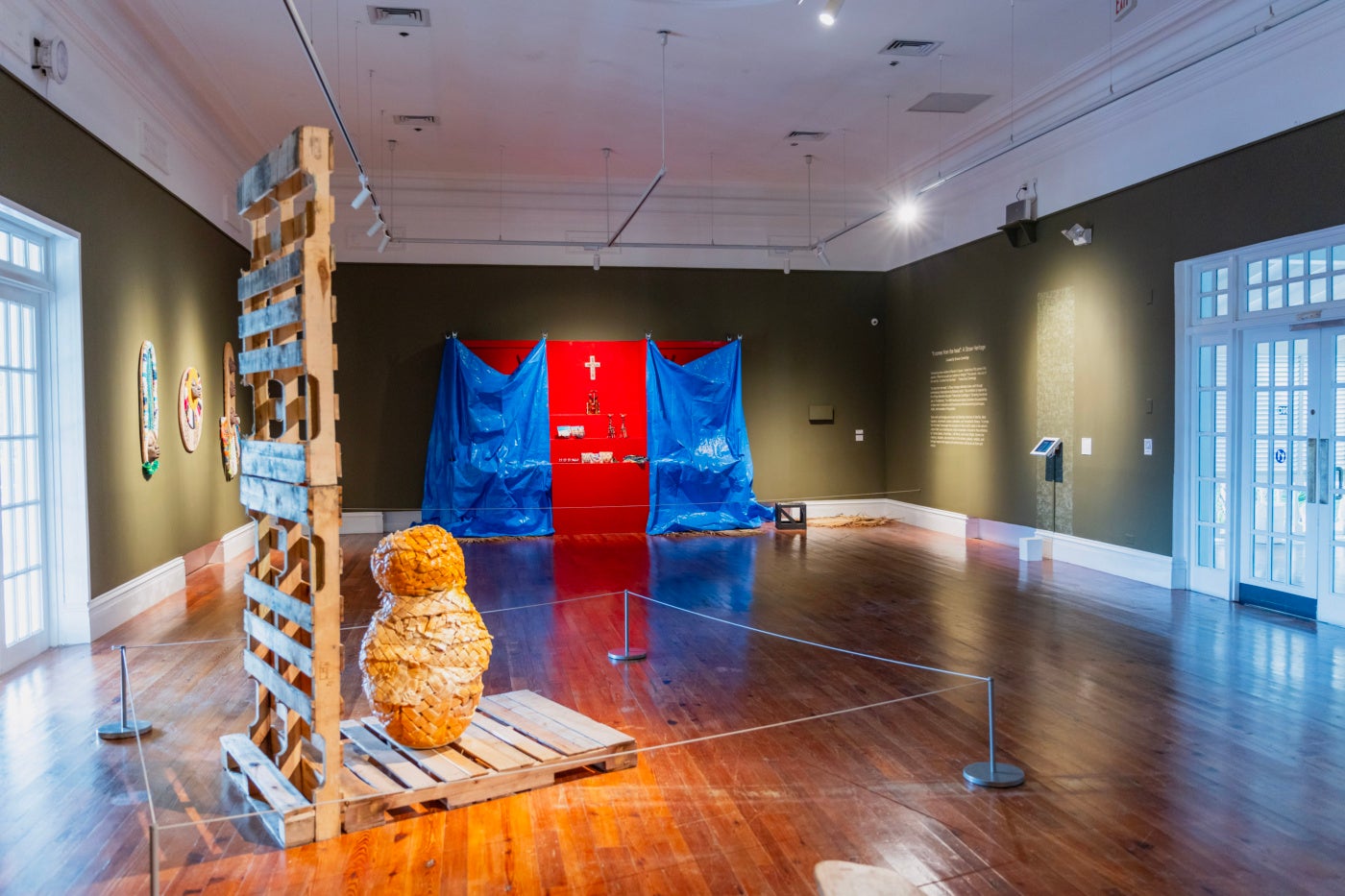

The Ministry’s 2024 domestic tourism tagline, “Tourism is everybody’s business,” which Minnis Rolle’s work refers to, aims to raise awareness of the industry’s economic significance and encourage inter-island travel in the sprawling archipelago. The campaign reads as propaganda for some, given the difficult context of tourism and the service industry in an independent nation with a bloody history of forced labour. The artist shares from experience: “I believe the Ministry of Tourism in The Bahamas has the most consistent and effective marketing campaign—not just for their target audience, people outside The Bahamas, but also in programming and soliciting Bahamians to continue believing there is more to gain than what we have historically gained from the tourism economy. It keeps us in a perpetual cycle of investing in the same things.” Tourism’s connection to colonial racial politics that Black Bahamians like Minnis Rolle still feel the effects of today. Service to visitors over locals is almost expected of Bahamians: by tourists and government officials alike. Though, this is perhaps an unavoidable obligation, as it is a five-billion-dollar industry accounting for over 50% of the country’s GDP.
Through her work in all sectors, Minnis Rolle confronts the weighty history and legacies of colonialism. She focuses on the representations of British colonial tourism that have shaped visual culture since their inception. Resourceful and adaptable, the artist employs different methodologies—be it painting, print, or performance—to explore and re-present critical narratives about the pervasive nature of tourism in the landscape. Minnis Rolle is also intentional in her approach, looking to both the present and historic effects of the industry on her selfhood as a rich vein to mine for creative cultural discourse in her practice.
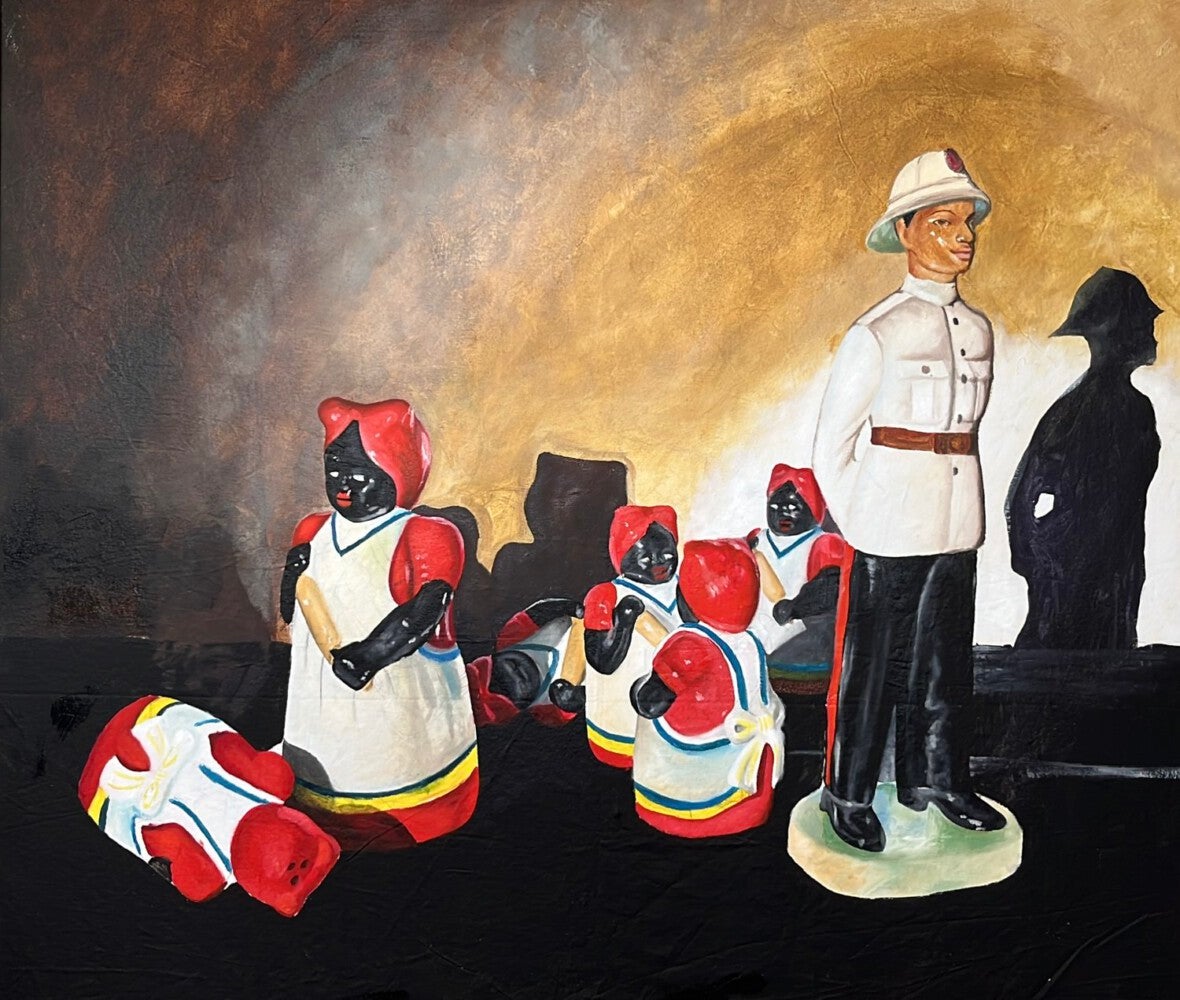
The artist’s many material investigations aim toward stimulating conversation around this complex subject locally within her communities, given her unique access at the arts-hospitality intersection- with the readily identifiable (to Bahamians) tropes and symbols in her practice offered up as accessible speaking points. Whether dressed as the Bahama Mama in performance, referencing souvenir salt-shakers of what is assumed to be a Black Bahamian woman through the problematic lens of the trope of the mammy, or looking to the struggling Straw Market downtown, she presents the symbols of tourism for re-investigation, rather than letting them be taken as default or left unchallenged.
Similarly, the colonially dressed and equally caricatured policemen figures that feature across her practice make reference to the complexity of interpersonal and societal power dynamics in The Bahamas, and the enduring influence of colonial patriarchal hegemony on their largely Black demographic. The colonial uniform for police in Nassau is primarily used by officers in the Bay Street area, one of the more historic tourist epi-centers of the island. The methods of making that Minnis Rolle uses also refer to the dominant presence of tourism in the landscape and Bahamian history. Printmaking’s appearance in her practice, with current experimentations in monoprint, act as a commentary on the mass-printed and produced images of the Bahamian landscape that have been in circulation since the turn of the 20th century. In her caretaking of other Caribbean artists, and her creative provocations around the visual culture of tourism in the islands, Minnis Rolle considers the processes of making and circulating of her work holistically, and how it contributes to the narrative of the nation in the wider public and international imaginary of the tropics.
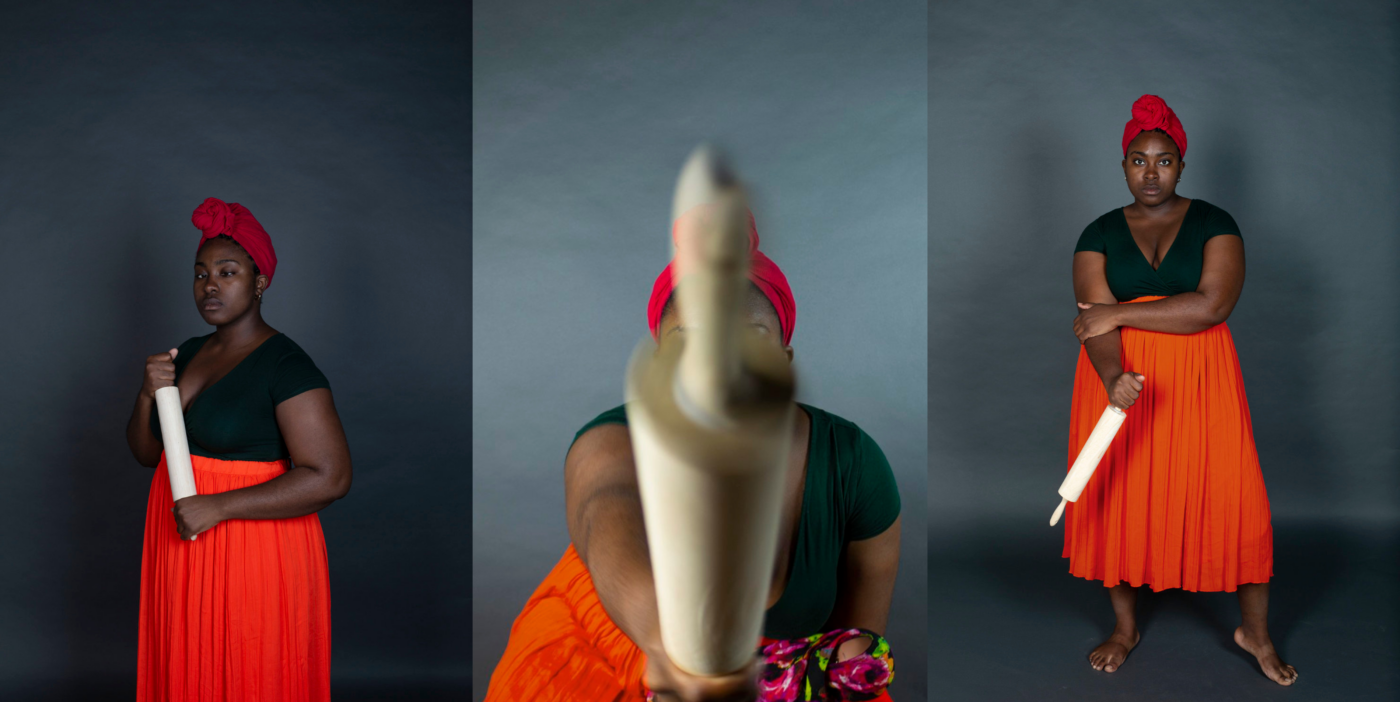
Minnis Rolle’s work reveals both the palpable and nuanced ways tourism permeates everyday life in the Bahamas, ranging from subtle observations to more confrontational critiques. Everybody’s Business (2024) employs the artist’s recurring motifs of colonial tourism—such as police uniforms, souvenirs, and straw goods—to explore how these persistent images influence Bahamians’ self-perception today. Reflecting W.E.B. Du Bois’ concept of double-consciousness among African Americans—the “sense of always looking at one’s self through the eyes of others, of measuring one’s soul by the tape of a world that looks on in amused contempt and pity”—the Caribbean faces the challenge of promoting an idealized image that is often misleading and rooted in the biased narratives of colonizers. This struggle underscores a shared experience and the shared histories of Black Caribbean peoples and African Americans, shaped over centuries. Minnis Rolle notes, “our stories outside of how we serve others are generally not told.” Her work highlights the importance of self-representation within the Black Atlantic, using her unique Bahamian context to engage with the broader Black Diaspora.
[Minnis Rolle] she presents the symbols of tourism for re-investigation, rather than letting them be taken as default or left unchallenged.
Artists and cultural workers like Minnis Rolle operating from the heart of tourism in work and in life, who interrogate and unpack colonial tourism and its legacies in the everyday are necessary disruptors to the cogs of the multi-billion dollar industry’s wheel. Offering counter-tourism narratives in a place where tourism is part of the bedrock of the national history, the economy, is necessary work for relatively young postcolonial nations building an independent identity for themselves. Angelique Nixon, Caribbean writer, academic, and artist, said of Caribbean artists and cultural activists: “They vex the dominant narratives of Caribbean tourism… they appropriate, mimic, and write against typical travel narratives to reveal how discourses of tourism are an integral part of much larger colonial and neo-colonial histories.” Minnis Rolle is one such vexer, and a self-identified “cultural architect,” using her creative practice to assess the metaphorical structural integrity, or viability, of tourism in the Bahamian landscape of the present with a hard look to its impacts on potential futures.
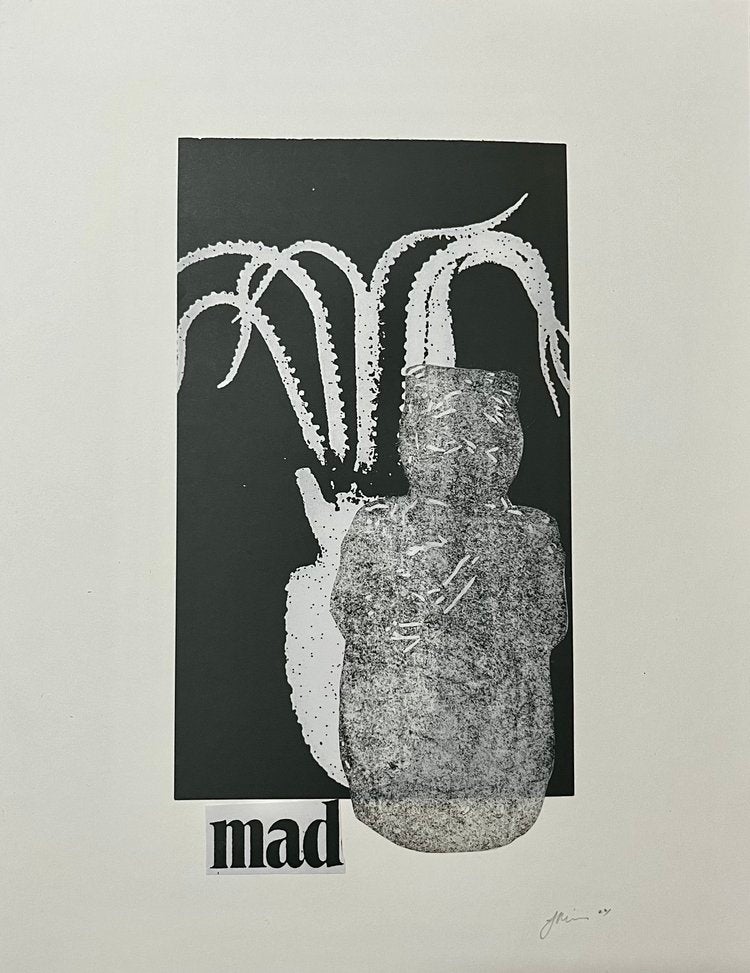
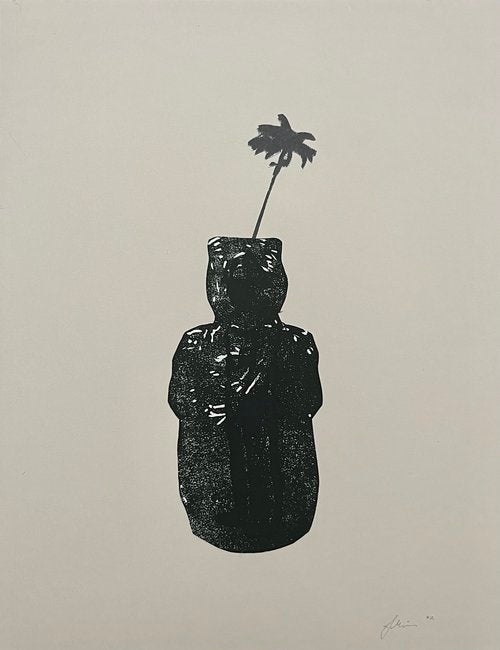
Left to right: Jodi Minnis Rolle, Solange has a song about this (2023), monotype print on mulberry paper and collage, 14 x 11 inches. Jodi Minnis Rolle, Will I see you again? (2023), monotype print on mulberry paper and collage, 14 x 11 inches. Images by and courtesy of the artist.

